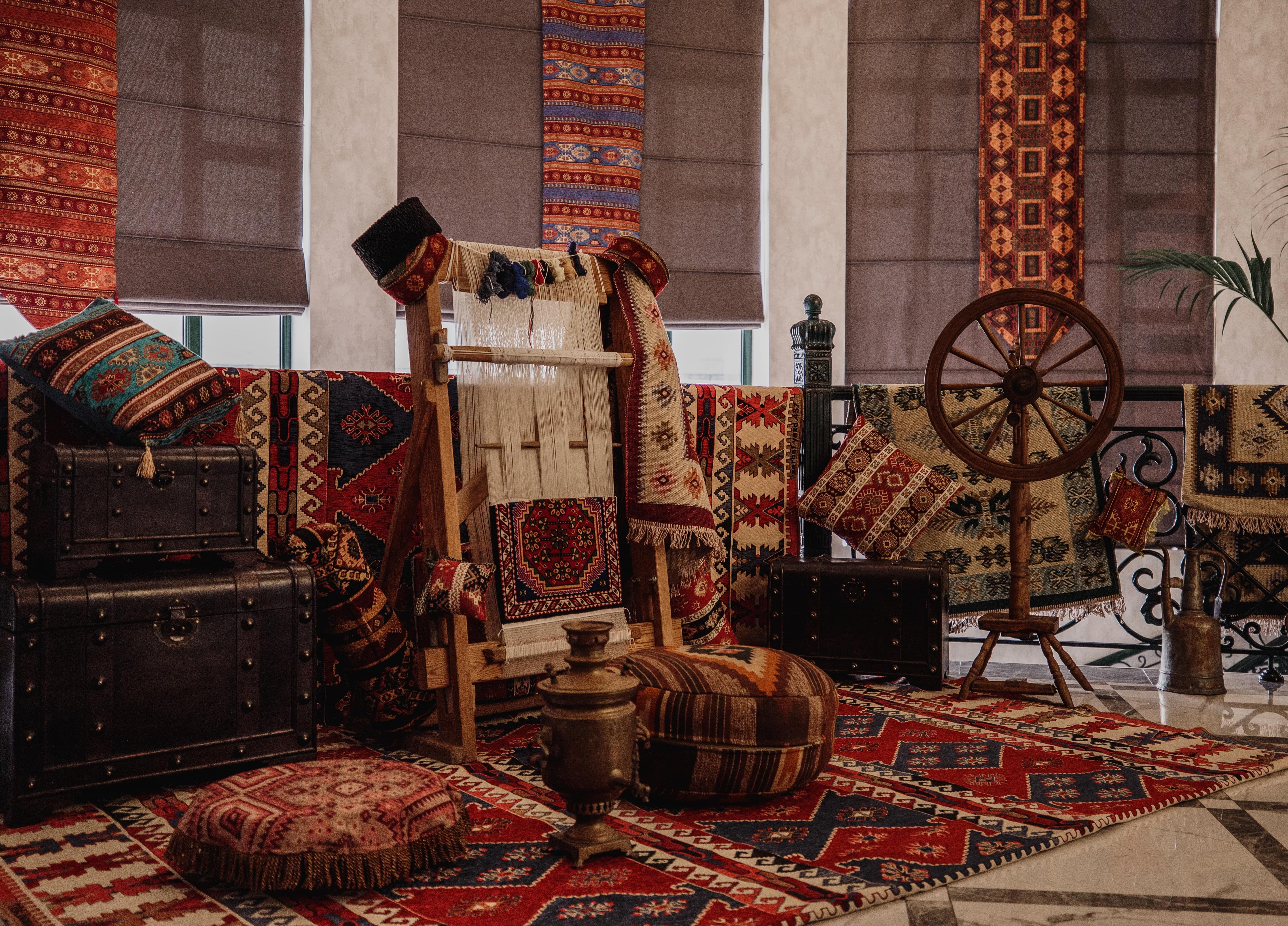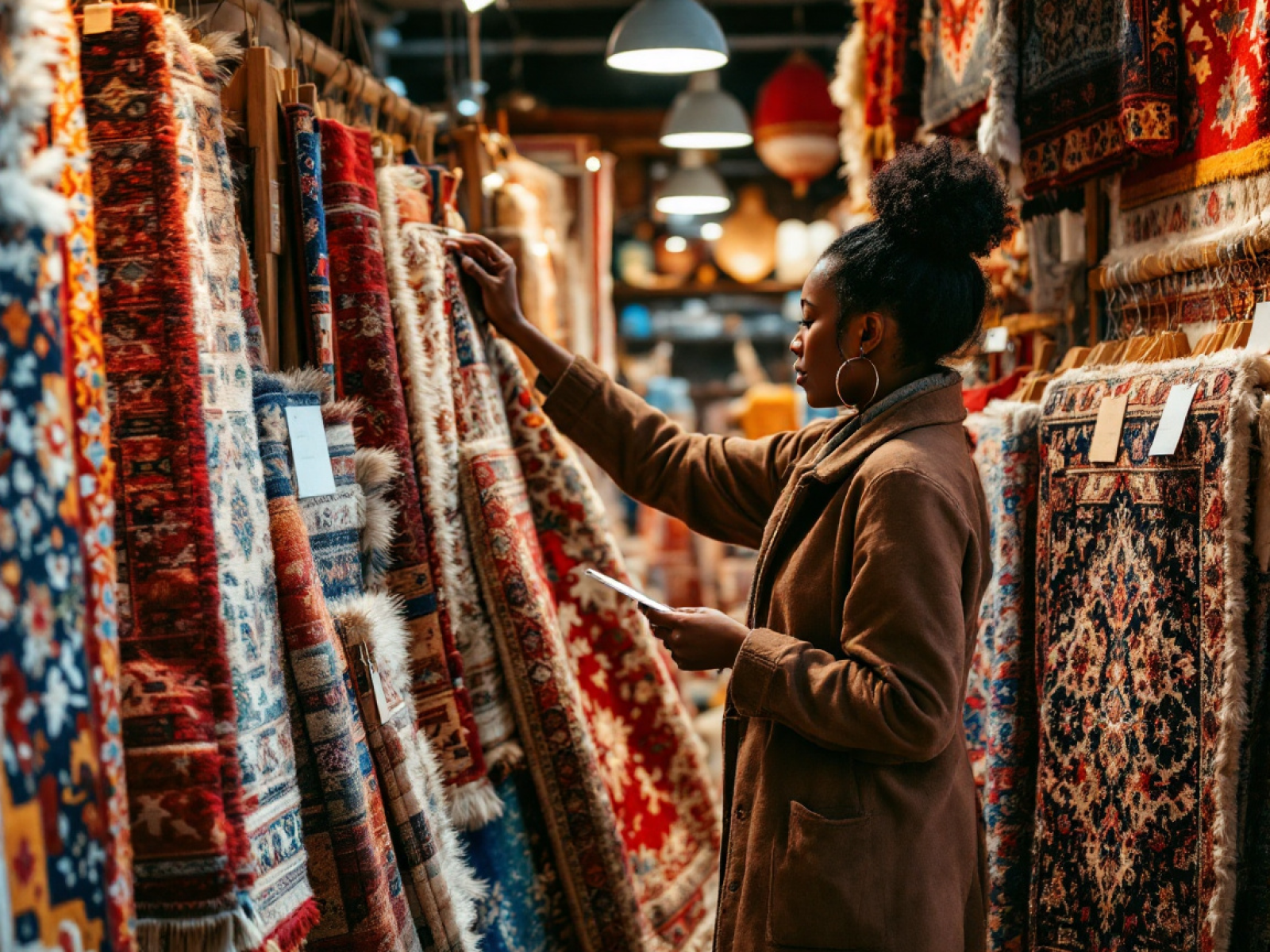Why Handmade Rugs Are an Eco-Friendly Choice for Your Home
Handmade rugs in home decor are a timeless symbol of craftsmanship, elegance, and authenticity. Beyond their aesthetic appeal and intricate designs, these rugs also offer significant environmental benefits. Handmade rugs have emerged as an eco-friendly home choice as the world gravitates toward sustainable living. Let’s explore why these rugs are a sustainable option and how they contribute to the environment and your living space.
The Essence of Handmade Rugs
Handmade rugs are crafted by skilled artisans who use traditional techniques passed down through generations. Unlike machine-made rugs, these pieces are often woven on looms by hand, making each rug unique. Materials like wool, cotton, silk, and jute are commonly used, which are natural, biodegradable, and sustainable. This artisanal approach not only reduces environmental impact but also celebrates the artistry and cultural heritage behind every rug.
1. Sustainable Materials
One of the most compelling reasons handmade rugs are eco-friendly lies in their materials. Artisans primarily use natural fibers such as:
- Wool: A renewable resource that’s durable and biodegradable. Sheep’s wool is shorn annually, making it a sustainable choice.
- Cotton: A plant-based fiber that’s soft, breathable, and biodegradable. Organic cotton further reduces environmental impact.
- Silk: Derived from silkworms, silk is a luxurious and sustainable material when harvested ethically.
- Jute: A fast-growing plant fiber that’s biodegradable and requires minimal water and pesticides to cultivate.
These materials eliminate the use of synthetic fibers, which often contain harmful chemicals and contribute to pollution. By choosing handmade rugs, you support the use of eco-friendly, natural resources.
2. Energy-Efficient Production
The production of handmade rugs involves significantly less energy compared to machine-made counterparts. Industrial rug manufacturing relies on heavy machinery powered by electricity or fossil fuels, which contributes to carbon emissions. In contrast, artisans rely on manual labor and traditional tools, reducing the environmental footprint of each rug.
By purchasing handmade rugs, you indirectly reduce energy consumption and help combat climate change. This energy-efficient process also avoids the large-scale waste and emissions associated with mass production.
3. Longevity and Durability
Handmade rugs are renowned for their superior quality and durability. Their meticulous construction ensures they last for decades, sometimes even generations, with proper care. This longevity contrasts sharply with machine-made rugs, which often wear out quickly and contribute to landfill waste.
A durable rug reduces the need for frequent replacements, thereby minimizing resource consumption and waste generation. Choosing handmade over mass-produced rugs aligns with the principles of sustainable living by promoting long-term use.
4. Biodegradability
When handmade rugs reach the end of their lifespan, their natural fibers break down naturally without harming the environment. Synthetic rugs, on the other hand, are made from petroleum-based materials like nylon or polyester, which take hundreds of years to decompose and release harmful microplastics into the environment.
Opting for biodegradable rugs helps reduce pollution and supports a cleaner, healthier planet.
5. Support for Local Artisans and Communities
Artisans in rural or small communities around the world often produce handmade rugs. By purchasing these rugs, you contribute to fair wages and support sustainable livelihoods. This economic empowerment discourages the exploitation of labor and promotes ethical practices.
Many handmade rug cooperatives also emphasize sustainable harvesting of raw materials, ensuring that their environmental impact remains minimal. By supporting these communities, you foster a cycle of sustainability that benefits both people and the planet.
6. Reduction in Chemical Use
Machine-made rugs often undergo chemical treatments for stain resistance, flame retardancy, or dyeing. These chemicals can release volatile organic compounds (VOCs) into your home, potentially causing health issues over time. Additionally, the production process for synthetic rugs often involves harsh chemicals that harm ecosystems.
Handmade rugs, on the other hand, are typically dyed using natural or low-impact dyes, which are safer for both the environment and your home. This reduction in chemical use ensures cleaner air quality and a healthier living space.
7. Timeless Appeal and Versatility
Handmade rugs offer a timeless aesthetic that never goes out of style. Their classic designs and intricate craftsmanship transcend trends, ensuring they remain a cherished part of your home for years. This versatility reduces the need to replace rugs frequently, further aligning with sustainable practices.
8. Encouragement of Slow Living
The process of creating a handmade rug embodies the principles of slow living—an approach that values quality over quantity, intentionality, and connection to the process. By choosing a handmade rug, you invest in an item that tells a story, celebrates tradition, and aligns with the slow-living philosophy.
Slow living emphasizes mindful consumption, encouraging individuals to buy less but choose better. Handmade rugs perfectly exemplify this mindset, offering a meaningful and sustainable alternative to mass-produced items.
How to Ensure Your Rug is Truly Eco-Friendly
While handmade rugs are inherently more sustainable, it’s essential to verify their authenticity and ethical production. Here are a few tips:
- Check Certifications: Look for certifications like GoodWeave, which ensures rugs are ethically made and free from child labor.
- Ask About Materials: Confirm that the rug is made from natural fibers and dyed using eco-friendly methods.
- Research the Source: Purchase rugs from reputable sellers who work directly with artisans or cooperatives.
- Consider Vintage Rugs: Vintage handmade rugs are an excellent eco-friendly choice. By reusing an existing rug, you reduce the demand for new production and give a second life to a beautiful piece of art.
Caring for Your Handmade Rug
To maximize the lifespan of your handmade rug, follow these care tips:
- Regular Cleaning: Vacuum gently and rotate the rug periodically to ensure even wear.
- Spot Cleaning: Use mild, eco-friendly cleaning products for spills.
- Professional Maintenance: Have your rug professionally cleaned every few years to preserve its beauty and integrity.
- Protect from Sunlight: Keep your rug away from direct sunlight to prevent fading.
Proper care ensures your rug remains a sustainable choice for years to come, enhancing its eco-friendly benefits.
Conclusion
Handmade rugs go beyond being mere home decor; they represent a commitment to sustainability, craftsmanship, and ethical consumption. Their use of natural materials, energy-efficient production, and durability make them an eco-friendly choice for conscious homeowners. By investing in a handmade rug, you support artisans, reduce environmental impact, and bring a piece of timeless art into your home.
In a world increasingly focused on sustainability, handmade rugs offer a perfect blend of beauty, functionality, and responsibility. Transform your living space while making a positive impact on the planet—one exquisite rug at a time.



